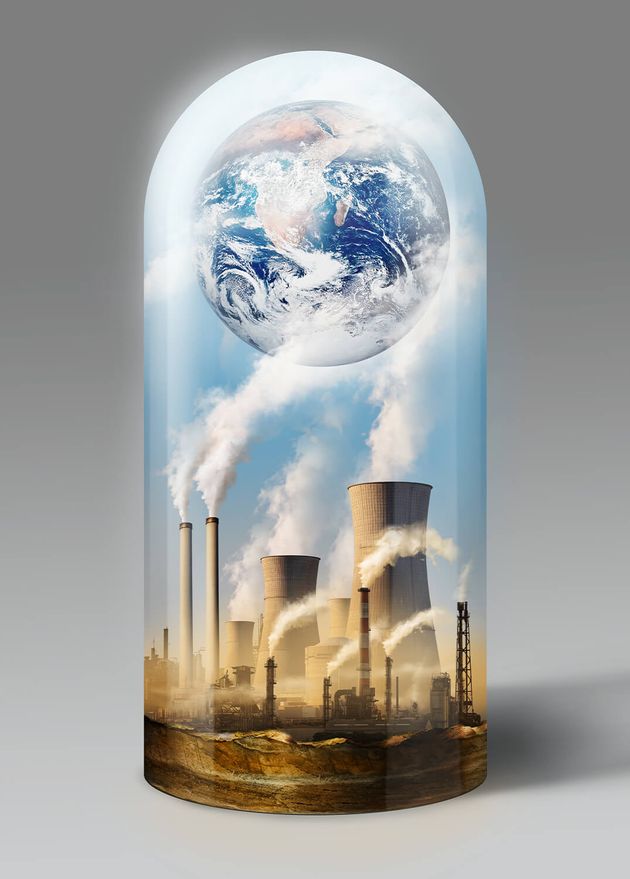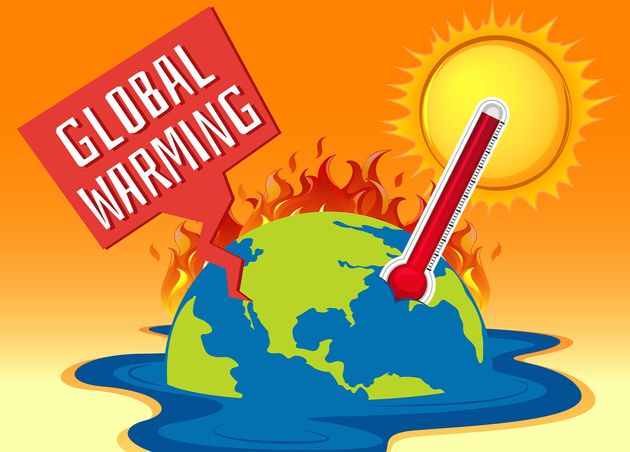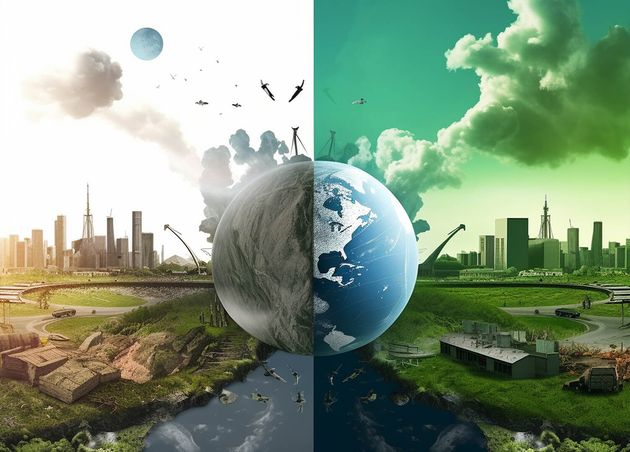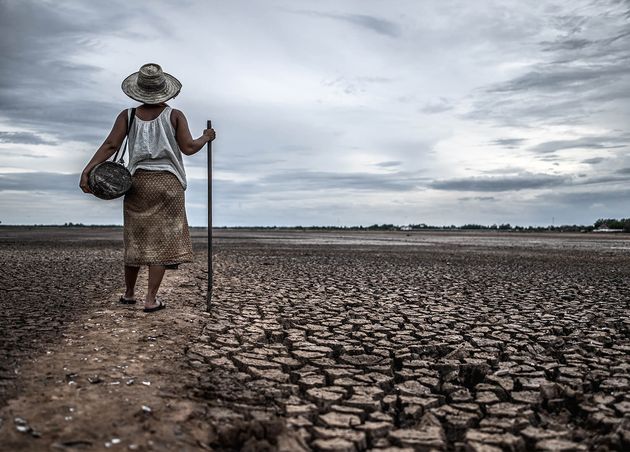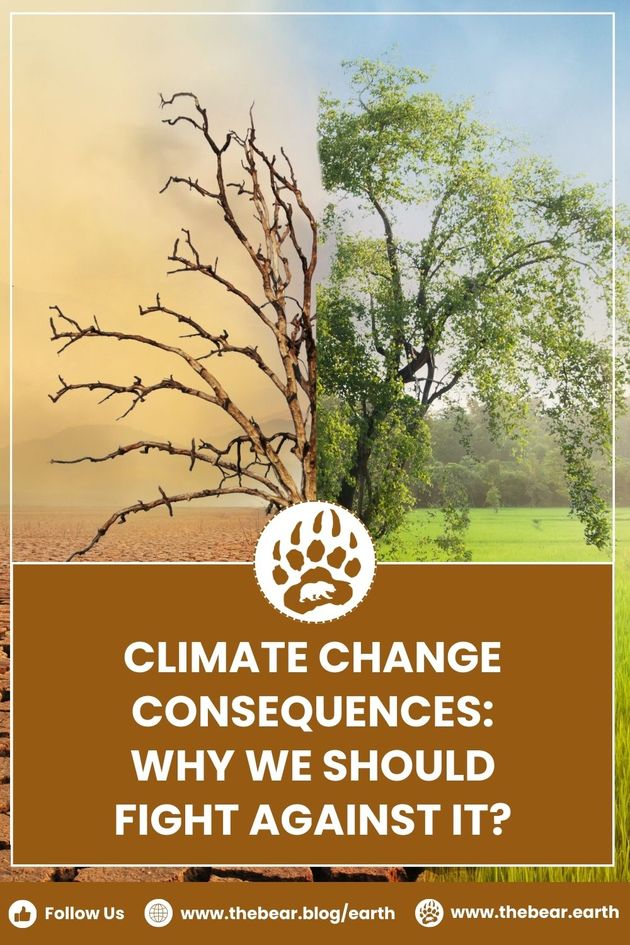Climate Change Consequences: Why We Should Fight Against It?
Climate change is long-term changes in the weather patterns. You are heavily mistaken if you think the climate change will not impact you. Climate change is the reality of today. It is not something that will happen in the future. We must understand the causes and consequences of climate to modify our impacts.
As we should already know, climate change is a very serious issue. It needs urgent action from people and organizations globally. It will have impacts everywhere on everyone. Global temperature is constantly increasing, and extreme weather events like droughts and hurricanes are increasing day by day.
Furthermore, climate change is a complex phenomenon. You cannot say the efforts of any one region can help. That’s why everyone has to play their part to combat climate change. Let's dig deeper to understand the climate change consequences and why we should fight against it.
🌏 Eco Trivia!
In 2023-2027, it is predicted that the annual average temperature will be 1.1-1.8 degrees Celsius higher than the average of 1850-1900.
Causes of Climate Change
The phenomenon of the greenhouse effect is one of the root causes of climate change. On the other hand, without the greenhouse effect, the presence of life on Earth would be impossible. Human activities at the beginning of the 19th century started to increase the greenhouse effect, resulting in a higher temperature for the earth. Among the leading causes of climate change is the emission of greenhouse gases. These gases capture the sun's heat and don’t let it go to outer space. The phenomenon is called global warming. This results in increasing the temperature of the earth.
Natural Causes of Climate Change
Although climate change is mostly attributed to human activities, natural causes also impact climate. Earth’s orbit changes, and its rotation impacts climate change as it impacts glaciers. Volcanoes also play a vital role in the environmental changes. Volcanic eruptions release carbon dioxide, which can be somewhat related to climate change. Solar radiations and tectonic shifts also play their role.
All these natural changes were responsible for climate change even before the Industrial Revolution. They also play their role now, but the rise in temperature change is mostly attributed to human activities.
Human-driven Causes of Climate Change
Another leading cause of climate change is anthropogenic activities. Unchecked fossil fuel burning in the last 150 years has drastically increased the amount of greenhouse gases in the environment. Human activities like deforestation, power generation, transportation, and many others are adding to the Greenhouse gases. The level of greenhouse gases is higher than in the last 800,000 years.
Let’s look deeply at how human activities are responsible for climate change.
Power Generation
Power generation and heat production by burning fossil fuels contributes to a huge amount of global emissions. Electricity generation still uses coal and oil, producing powerful greenhouse gases like nitrous oxide and carbon dioxide. These make a blanket around the earth and don't let the heat go back again. As recorded in 2021, 60% of the United States's electricity was still produced using these methods.
Globally, there has been a changing shift in power generation that is more environmentally friendly. Electricity production from windmills and solar energy are being used. However, these are not producing harmful gases for the environment, but the world’s shift toward them is slow.
Transportation
Cars, buses, and road vehicles contribute greatly to overall global emissions. These use petroleum-based fuels that lead to significant carbon dioxide emissions. Emissions from ships and planes also add up in the transport emissions. Transportation contributes to about a quarter of energy-related emissions. These emissions increase significantly with time.
Manufacturing and Industry
Industries and manufacturing units like cement, iron, electronics, and many others use fossil fuels for energy production. To make items used for building our infrastructure, a huge amount of energy is required. Industrial processes and mining also add a significant amount of gases to the environment. Factory machines rely heavily upon coal, petroleum, or fossil fuels that produce greenhouse gases.
Agriculture
The agriculture sector is notorious for producing a lot of methane and nitrous oxide. These gases are powerful greenhouse gases. Adaptation of new crop management systems and widespread use of chemical fertilizers leads to environmental nitrous oxide emission. Much industrialized farming also adds much methane gas to the atmosphere.
Deforestation
Trees are very important for balancing an ecosystem. They store carbon, and by cutting them, we are liberating a significant amount of greenhouse gases into the environment. About 12 million hectares of forests are cut yearly.
Oil and Gas Operations
Almost all stages of production and consumption of oil and gas emit greenhouse gases. All the stages produce a significant amount of methane. However, methane is less than Carbon dioxide in the environment. It's a more powerful greenhouse gas.
Our Lifestyles
The way we live is adding a lot to climate change. What products we use, how much electricity we use, which car we use, and all such daily life decisions make a huge impact on the condition of our environment. Household carbon footprints add to the global greenhouse emissions.
🌏 Eco Fact!
In 2020, 11% of greenhouse emissions in the United States were caused by the agriculture industry.
Consequences of Climate Change
Climate change is a fact, and its impacts are already showing. It is one of the greatest threats life on earth is facing. Although a lot can be done to avoid these consequences, the effects of storms, hurricanes, drought, and extreme conditions can also be seen today.
Let’s have a look at a few effects of climate change.
Climate Change Impacts on the Environment
Climate change drastically impacts the environment throughout the world, regardless of whether it is at the poles or in the tropics. The ecosystem is a balanced system of food chains and webs disturbed by changing environments.
- The global average temperature is constantly rising. The last decade (2011 - 2020) was recorded as the warmest.
- As temperature increases, it leads to more evaporation and more rainfall. Which then leads to heavy destructive storms.
- Temperature increase leads to more evaporation, which can result in more drought.
- Hot and dry weather also leads to intense and more frequent wildfires. Wildfires also spread fast in hot weather.
- The Arctic is getting warm much faster than the other ecosystems. It is resulting in the melting of ice faster and faster.
- The sea level is rising day by day. Scientists predict that sea levels can rise as much as 3.6 feet due to ice melting by the end of this century. Rising sea levels can harm the environment, particularly coastal ecosystems.
- Increased sea levels can also lead to intense flooding. In 2022, heavy rain in Pakistan caused floods that destroyed many regions of the country.
- Oceans absorb about 93% of trapped greenhouse gases. This leads to an increase in their temperature. This increased temperature is harmful to marine life.
Climate Change Effects on Animals
Almost all animals are suffering from the impacts of climate change. Many species are on the brink of extinction. Climate change drastically changes the habitats of animals which they have adopted for millions of years. This exacerbates the chances of extinction of species already threatened by other anthropogenic factors.
Ice-dependent species cannot survive when glaciers melt. Similarly, coastal habitats are being destroyed by rising sea levels. Wildlife behaviors like mating, migration, and feeding depend on environmental factors. All these environmental shifts are happening so fast that they take a lot less time to adapt to current climate conditions.
Climate Change Effects on Humans
Humans are dependent on their environment for their survival. They are also not safe from the harmful consequences of climate change. Let’s discuss some of the impacts.
- Growing crops and rearing livestock needs special care for seasonal adaptions. Drastic weather changes, constant flooding, and unpredictable weather changes make it difficult for farmers to grow crops.
- As climate change negatively impacts the agricultural sector of Earth, it poses a huge threat to our food supply.
- Climate change has negatively impacted the air quality of our environment. People are exposed to more harmful gases, which are causing many diseases. Warmer conditions also facilitate insect-borne diseases like malaria, as their vectors survive better in warm climates.
- Many people become victims of extreme weather conditions like floods and storms yearly.
- Climate change is worsening the inequalities among nations. Wealthier nations are responsible for more gas emissions as low-income countries become victims of its impacts.
Climate change is an undeniable reality. It has been increasing day by day. Its negative impacts are already being felt. Life on Earth will become more challenging if it continues at the same rate. How they tackle climate change depends on every individual and big organization. If you think one individual cannot do much, remember every small action adds up to prevent human suffering and death.
In addition, the leaders on climate change have proposed many solutions that consider many aspects of climate change. Many solutions need money for applications like sustainable products and renewable energy. It is the time that everyone comes together and fights for this common cause before it's too late.
Recommended for you
Kuroda Japanese Restaurant: A Memorable Eating Experience in Ayutthaya
Tle (Hungry Bear)
Gay-Friendly Hotels and Accommodations in Thailand: The Complete Guide
Gabriel (Gay Bear)



